Reassuringly expensive, but the Dell 14 Premium laptop is an XPS 14 by any other name
The Dell 14 Premium laptop aims for the stars, but design deja vu and unimpressive battery life see it fail to launch
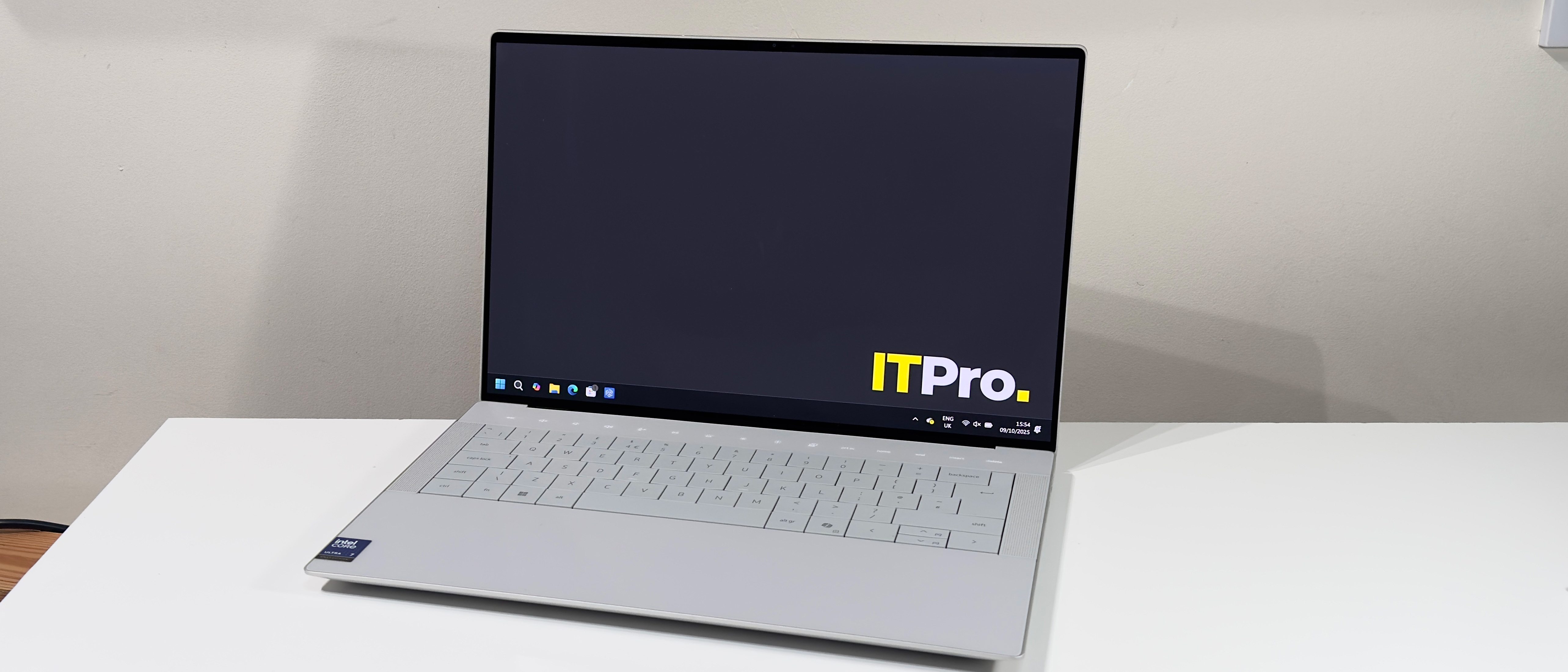
-
+
Rock-solid build
-
+
Great OLED touchscreen
-
+
Dedicated GPU
-
-
Mediocre battery life
-
-
Middling keyboard
-
-
Expensive

Whisper it quietly, but the Dell 14 Premium laptop is a rebadged XPS 14. And despite the new moniker, this laptop is not to be confused with Dell's similarly-named business model, the Pro 14 Premium. This is a laptop with a very different set of priorities.
In contrast to the sliver-thin profile of its business-focused cousin, the 14 Premium carries over the XPS 14's chunkier, more eye-catching design and reprises its party trick of combining dedicated Nvidia graphics with increased CPU horsepower.
The result is predictable: genuinely premium-feeling build, mostly good performance, some missed opportunities, and a price that will make you wonder whether you should buy a MacBook Pro instead.
The 14 Premium comes in a choice of light platinum silver or dark graphite grey, and prices start at £1,499. The base model has a capable Ultra 7 255H CPU and integrated graphics courtesy of Intel's Arc 140T Graphics chip. This is matched with 16GB of RAM, a 512GB SSD, and a 14.5in 2K non-touch LCD panel.
As ever, there are plenty of upgrades available if you can afford them. The presence of Intel's Arrow Lake processors opens the door to dedicated GPUs – something Lunar Lake doesn't allow. That means, for the princely sum of £400, you can upgrade to a 6GB Nvidia RTX 4050 GPU.
If you still have more money to spend, then you can double the RAM to 32GB for £100 and double it again to 64GB for another £200. Similarly, you can expand the storage to 1TB for a reasonable £50. The 2TB and 4TB options are pricier self-encrypting SSD drives, so each upgrade adds a further £150 and £250 respectively.
Needless to say, the costs mount up pretty quickly. Our review unit partnered the Ultra 7 255H CPU with the 6GB RTX 4050, 32GB of RAM, a 1TB SSD, and the optional OLED touchscreen, and the price ended up at £2,199 inc VAT.
Sign up today and you will receive a free copy of our Future Focus 2025 report - the leading guidance on AI, cybersecurity and other IT challenges as per 700+ senior executives
Dell 14 Premium: Design & connectivity
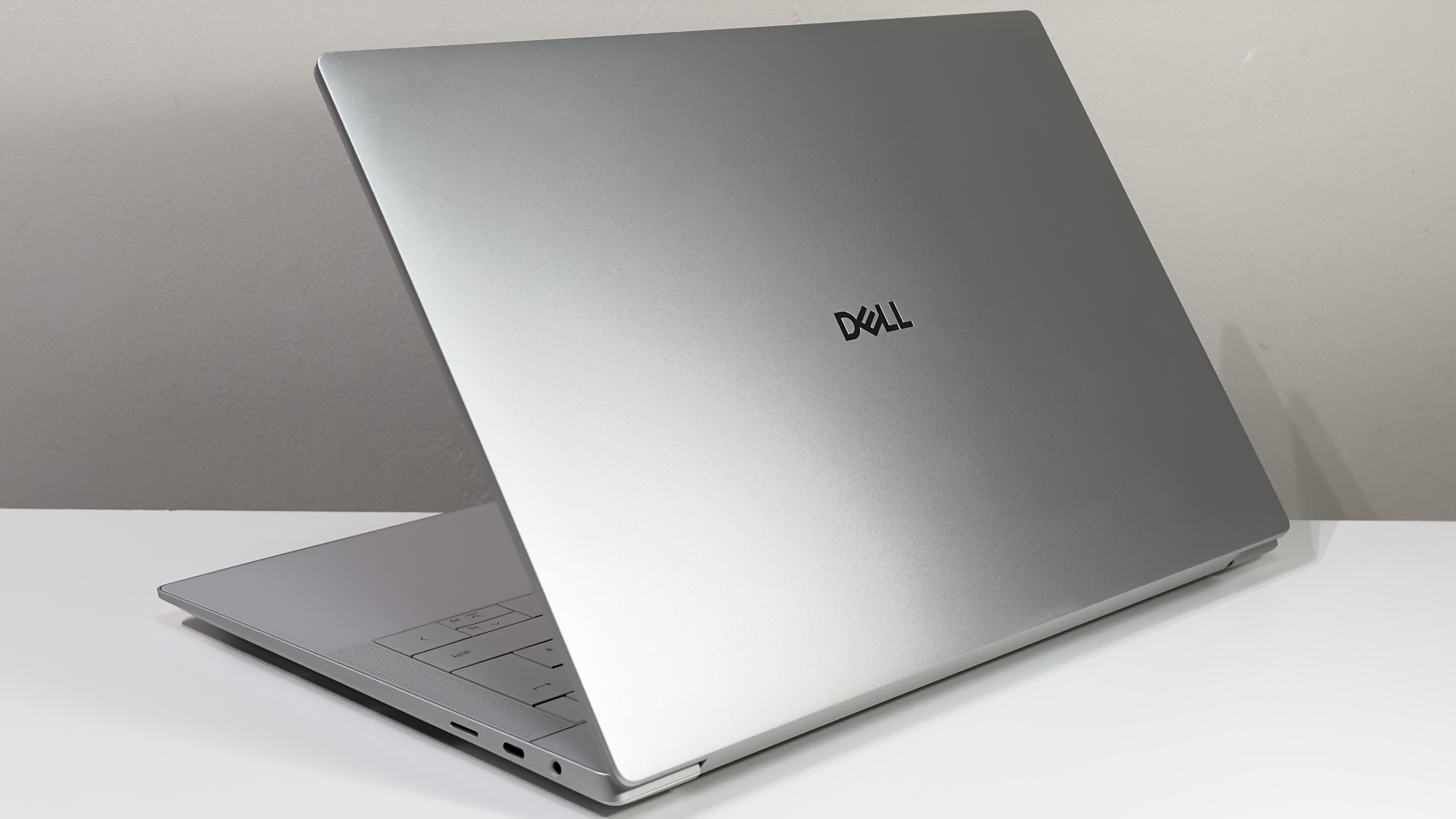
Visually, the 14 Premium is almost identical to the XPS 14. On the lid, the round Dell logo has made way for the new, arguably slightly prettier text-only logo, but that's about it as far as actual changes go.
At 1.72kg, the 14 Premium is more portable than ultraportable, but in all honesty, that's only a few grams heavier than the similarly sized MacBook Pro. And in any case, those grams are put to good use: this is a solid and sturdy lump of a thing. There's very little flex in the display, and the base is bordering on rock solid.
The 18mm-thick profile leaves a decent amount of room for physical connectivity, too. You get two Thunderbolt 4 USB-C ports on the left-hand edge, and one more on the right alongside a microSD slot and a 3.5mm headset port. Wireless connectivity includes Wi-Fi 7 and Bluetooth 5.4 courtesy of the Intel BE201 network adapter.
The extra chassis space has made room for speakers either side of the keyboard, and these are slightly improved on the most recent XPS 13 models. They're still not objectively good by any measure, though. Voices are a tad warmer, and music sounds a tad more rounded as a result, but the overall sound is still too thin and bland to be enjoyable.
The integrated 1080P webcam is similarly underwhelming. There's no privacy shutter, which seems like a silly omission, and while the color reproduction is fine and images are sensibly exposed, the lack of fine detail gives away the relatively low-resolution sensor.
Dell 14 Premium: Keyboard and touchpad
No, your eyes do not deceive you. Dell has indeed taken the not-especially-popular keyboard and touch-sensitive function row from the XPS 14 and reused them on the 14 Premium. If you weren't a fan of this design on the previous XPS generation, then unfortunately, you'll just have to cross your fingers and hope they don't reprise their role for the 2026 model.
The touch-sensitive function keys remain silly for all the previous reasons – we still much prefer physical keys, such as the ones Dell used on the Pro 14 Premium. Frankly, the decision to make crucial keys such as Escape and Delete keys into touch-sensitive keys – with no haptic feedback – is downright insane. And while it's nice to have a combined power and fingerprint reader, we'd still prefer it if it weren't right next to the backspace key, where an accidental tap sends your laptop to sleep.
Although it's one of our least favorite keyboards in recent years, the physical keys do actually feel quite nice. There's a nice pop of feedback to every keystroke, and while the large keys and zero-lattice design aren't our cup of tea, we've spent enough time on these XPS keyboards to acclimatize ourselves – the typos haven't disappeared completely, but they are just a little less regular. Given a choice between this or the slightly smaller keycaps and physical function row on the Pro 14 Premium, though, we'd go Pro every time.
The haptic touchpad is still hidden under an all-glass wristrest. This works well and looks great. There's a nice, wide, tall touch area which has enough dead space around it to prevent accidental clicks and taps.
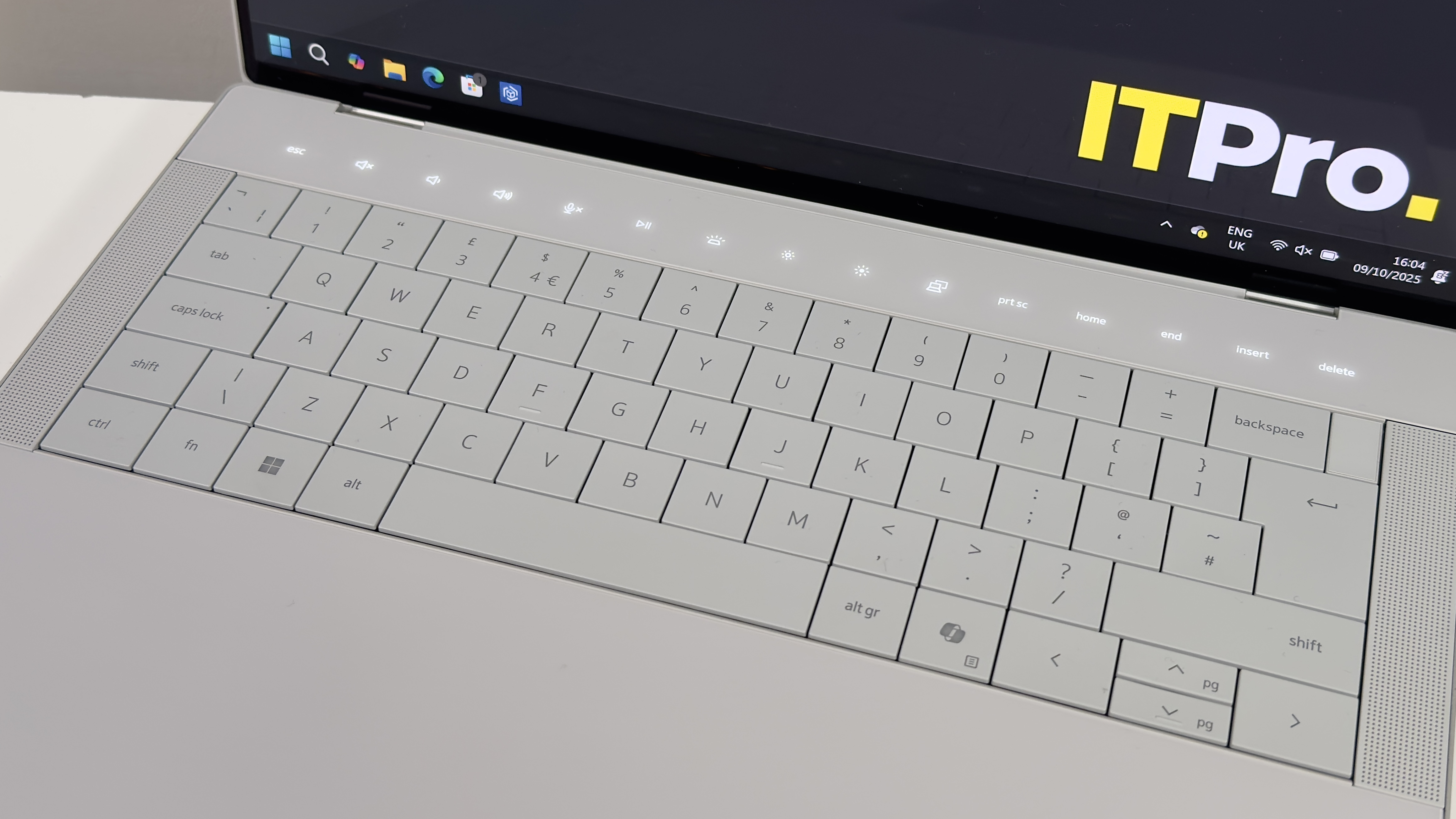
Dell 14 Premium: Display
Our review unit came with the fancier 3,200 x 2,000 OLED touchscreen – a £150 premium over the standard IPS panel in the base model – and it's really quite lovely.
Dell quotes a peak brightness of 400nits, and the panel also supports adaptive refresh rates from 48Hz to 120Hz, which is great news for gaming. You even get support for Dolby Vision HDR.
Straight out of the box, it looks great. Lovely deep blacks and richly saturated colors are the order of the day, and – possibly thanks to the presence of an Nvidia GPU – there are none of the overexposed HDR issues we've experienced with other recent laptops with Intel integrated GPUs at the helm. SDR looks great, and HDR looks surprisingly punchy, too.
Putting that performance into numbers pretty swiftly explains why it looks so good. The panel covers 99% of DCI-P3 and a creditable 86% of Adobe RGB, and brightness peaks at 358cd/m2 in SDR and 600cd/m2 in HDR, at least with smaller highlights.
Tested against a Display P3 target, the panel's accuracy is very respectable, too, with an average Delta E of 0.8 and a very slightly too cool white point of 6,692k.
Dell 14 Premium: Performance
The Dell's Intel Arrow Lake CPU trades the stamina of Lunar Lake for much improved multicore performance – and, in far more exciting news, the ability to work alongside a GPU.
Aside from the reduced stamina, however, there is one other downgrade: AI performance takes a big step down. Whereas the 4th-generation NPU in Intel's mid-pack Lunar Lake chips hits the 47 TOPS mark, the 3rd-generation NPU in the Ultra 7 255H only hits 13 TOPS.
For non AI workloads, however, the Dell's Core 7 Ultra 255H CPU provides a pretty good all-round performance. Single-core performance is on a par with the Lunar Lake generation, but multi-core performance is a different matter entirely – doubling Lunar Lake's core count from 8 to 16 sees multi-core performance leap 44% ahead in Geekbench 6 and a massive 87% ahead in Cinebench 2024. It's a big step up.
Compared against rivals from AMD, Qualcomm, and Apple, however, it's a less exciting picture – at least in synthetic benchmarks such as Cinebench 2024 and Geekbench 6. Single-core performance remains neck and neck with AMD and Qualcomm, but here the M4 Pro in Apple's MacBook Pro storms 38% ahead. Multi-core performance doesn't deliver any big upsets for Intel's rivals, but it does lean in its favor. Here, the Dell pulls around 3% ahead of Apple and, on average 15% ahead of AMD and Qualcomm.
It's great to see a dedicated GPU, but it is disappointing that Dell has stuck with a last-generation RTX 4050 – the same chip that was in the XPS 14. That said, it remains substantially more capable than even the best integrated alternatives from Intel and AMD. Even though the 14 Premium's relatively compact chassis limits it to a rather frugal 30W TDP, the RTX4050 storms ahead of integrated AMD and Intel rivals in synthetic benchmarks, pushing anywhere from 20% to 90% ahead.
It's worth noting that in-game performance is still limited, though – and especially if you're planning on using the native resolution of the 3,200 x 2,000 pixel OLED panel. Achieving smooth, playable framerates in resource-hungry titles such as Hogwarts Legacy requires DLSS Performance or Ultra Performance upscaling and – if you can live with the input lag – frame generation also helps to smooth out the experience. This is still not a gaming laptop by any stretch of the imagination.
One bigger issue for day-to-day use is that the Dell's cooling fans can be rather intrusive. Despite the GPU's limited TDP, the combined heat output of the CPU and GPU in the limited confines of the 14 Premium mean that the fans whirr away noisily under gaming loads. So noisily that you'll be reaching for headphones. This is far less of an issue with CPU-only workloads, but you'll still hear the fans spin up – and especially if you happen to be using an external monitor.
Battery life is by far the biggest disappointment here. The combination of a less efficient CPU and dedicated GPU means that the 14 Premium is one of the worst performers we've seen in recent months. With the screen brightness set to 170cd/m2, the Dell's 69.5Wh battery only lasted 11 hours and 23 minutes in our video rundown test – that's 4 or 5 hours less than any comparable laptop we've seen in recent months and around half the runtime of the M4 MacBook Pro 14in M4.
Dell 14 Premium: Is it worth it?
The 14 Premium is a missed opportunity. This was Dell's chance to redefine the standards for its Premium laptop range. Instead, it's the XPS 14 with the name crossed out and a new CPU.
In 2025, that doesn't cut it. Premium rivals such as the MacBook Pro 14in M4 deliver a far more convincing vision of the ultimate 14-inch laptop, and dramatically cheaper Windows rivals deliver a similar performance for much less cash and with fewer compromises.
Dell 14 Premium specifications
Display | 14.5‑inch 3,200 × 2,000 OLED touchscreen, 48‑120 Hz | Row 0 - Cell 2 |
Processor | Intel Core Ultra 7 255H (16 cores, up to ~5.1 GHz) | Row 1 - Cell 2 |
GPU | NVIDIA GeForce RTX 4050 (6 GB GDDR6) | Row 2 - Cell 2 |
RAM | 32 GB LPDDR5x | Row 3 - Cell 2 |
Ports | 3× USB‑C (Thunderbolt 4), 1× 3.5 mm audio jack, 1 × microSD | Row 4 - Cell 2 |
Storage | 1 TB PCIe NVMe SSD | Row 5 - Cell 2 |
Connectivity | Wi‑Fi 7, Bluetooth 5.4 | Row 6 - Cell 2 |
Weight | 1.72 kg | Row 7 - Cell 2 |
Dimensions | 320 × 216 × 18 mm | Row 8 - Cell 2 |
Battery Capacity | 69.5 Wh | Row 9 - Cell 2 |
Operating System | Windows 11 Home | Row 10 - Cell 2 |
Model tested | Dell 14 Premium (DA14250) | Row 11 - Cell 2 |
Sasha is a freelance journalist who's been writing about tech and consumer products for over two decades. With a career that started at the dawn of the millennium on Computer Buyer magazine, he passed through the official Intel Centrino magazine, Mobile Computer, before rounding off his print career on PC Pro magazine where he reviewed a broad spectrum of hardware and software before eventually specializing in laptop and monitor reviews. After the best part of a decade, he defected to the desks on the other side of the office and spent many years working on Expert Reviews before finally going freelance in 2024. Nowadays, he splits his time between reviewing tech and home appliances, falling off mountain bikes and cleaning up his kids' playroom.
-
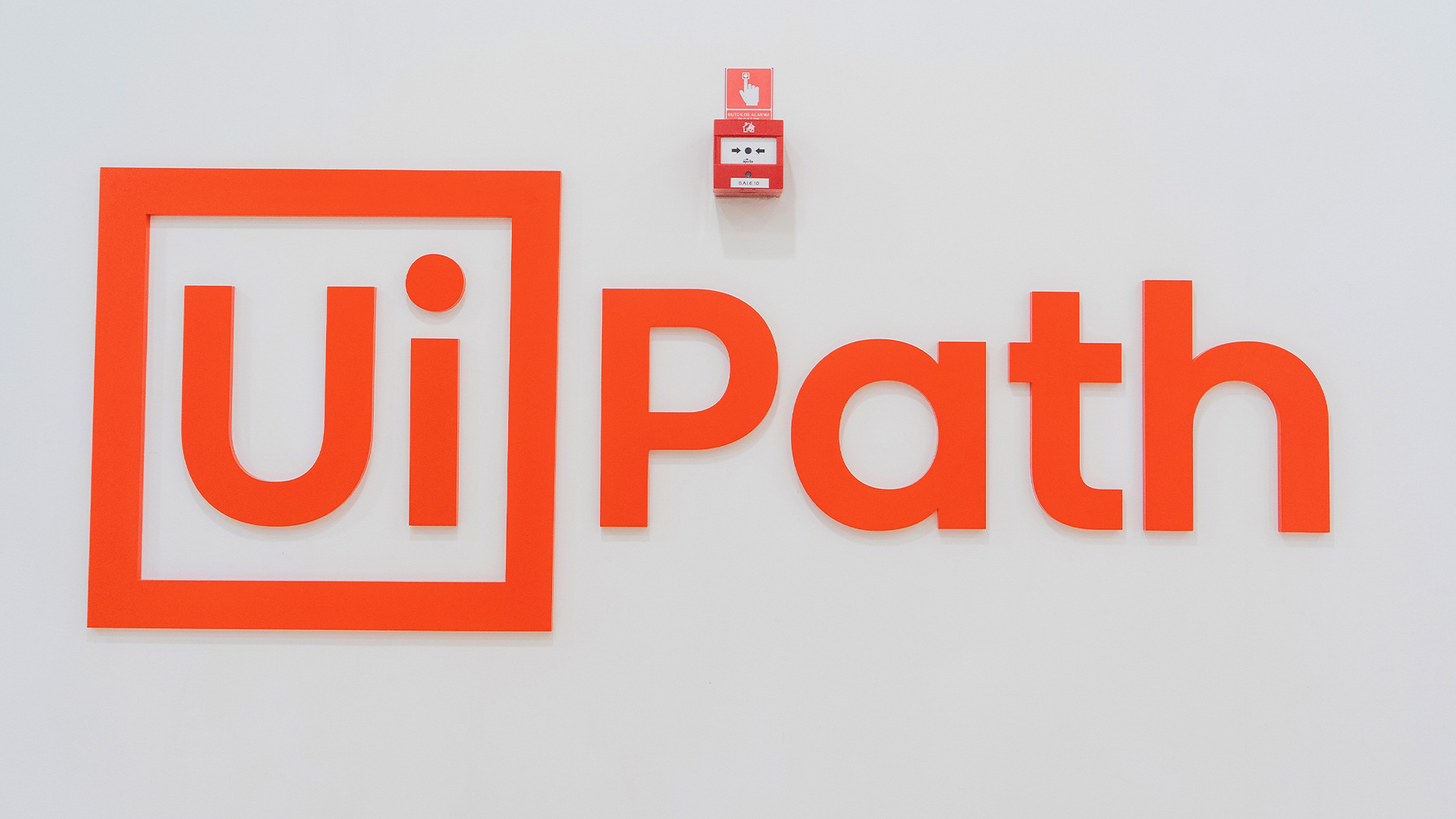 UiPath partners with Veeva to streamline application testing and validation
UiPath partners with Veeva to streamline application testing and validationNews UiPath has joined the Veeva AI partner program, pairing the software vendor’s agentic testing capabilities with Veeva Validation Management
By Daniel Todd Published
-
 Snowflake inks $200m deal with Anthropic to drive ‘Agentic AI’ in the enterprise
Snowflake inks $200m deal with Anthropic to drive ‘Agentic AI’ in the enterpriseNews The data cloud giant deepens its alliance with the AI research firm, integrating Claude models to power autonomous agents for more than 12,000 global customers
By Rene Millman Published
-
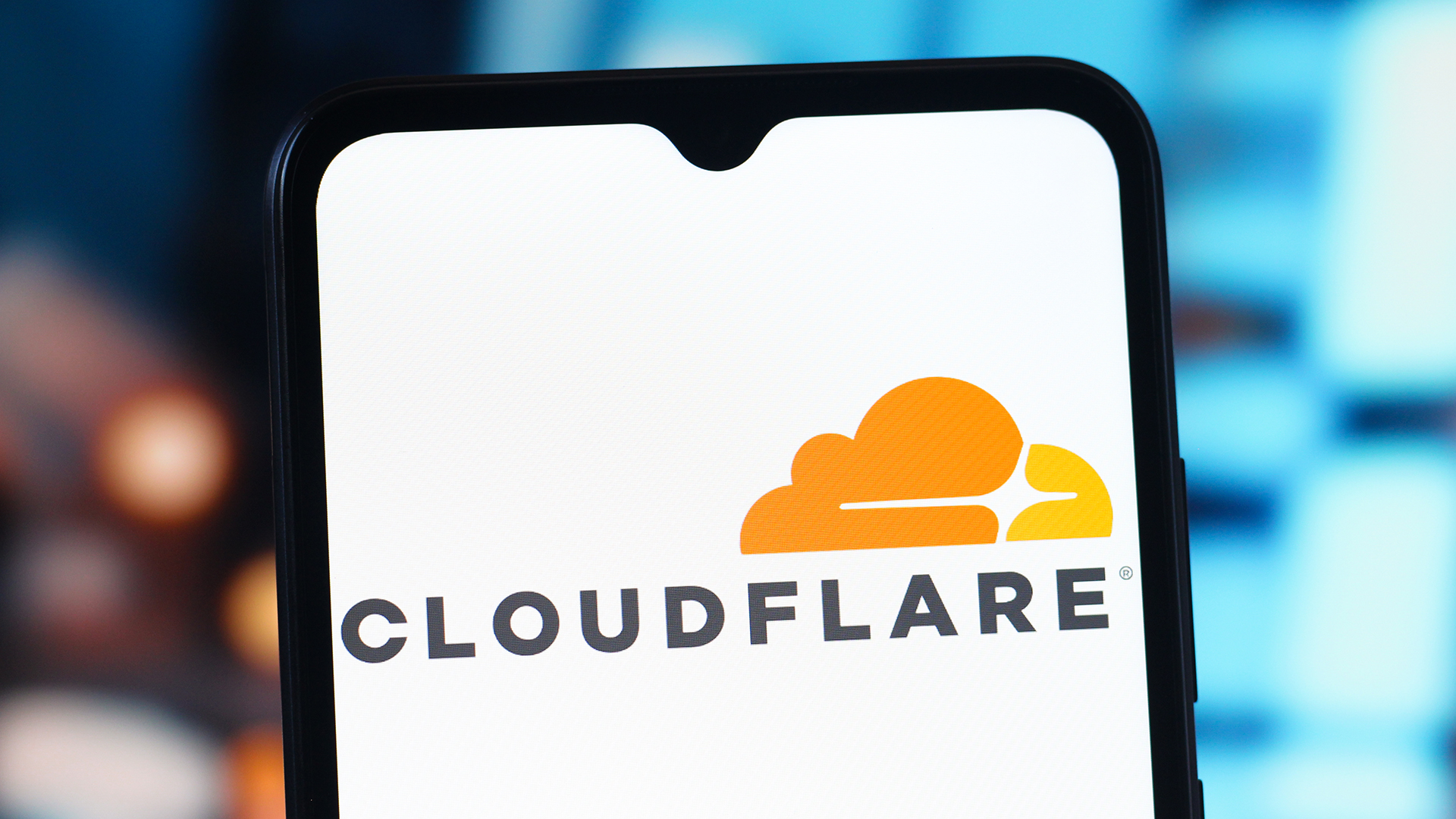 Cloudflare faces fresh disruption, as major websites including LinkedIn, Canva, and Downdetector show error messages
Cloudflare faces fresh disruption, as major websites including LinkedIn, Canva, and Downdetector show error messagesNews The cause of the widespread disruption is not yet clear
By Rory Bathgate Published
